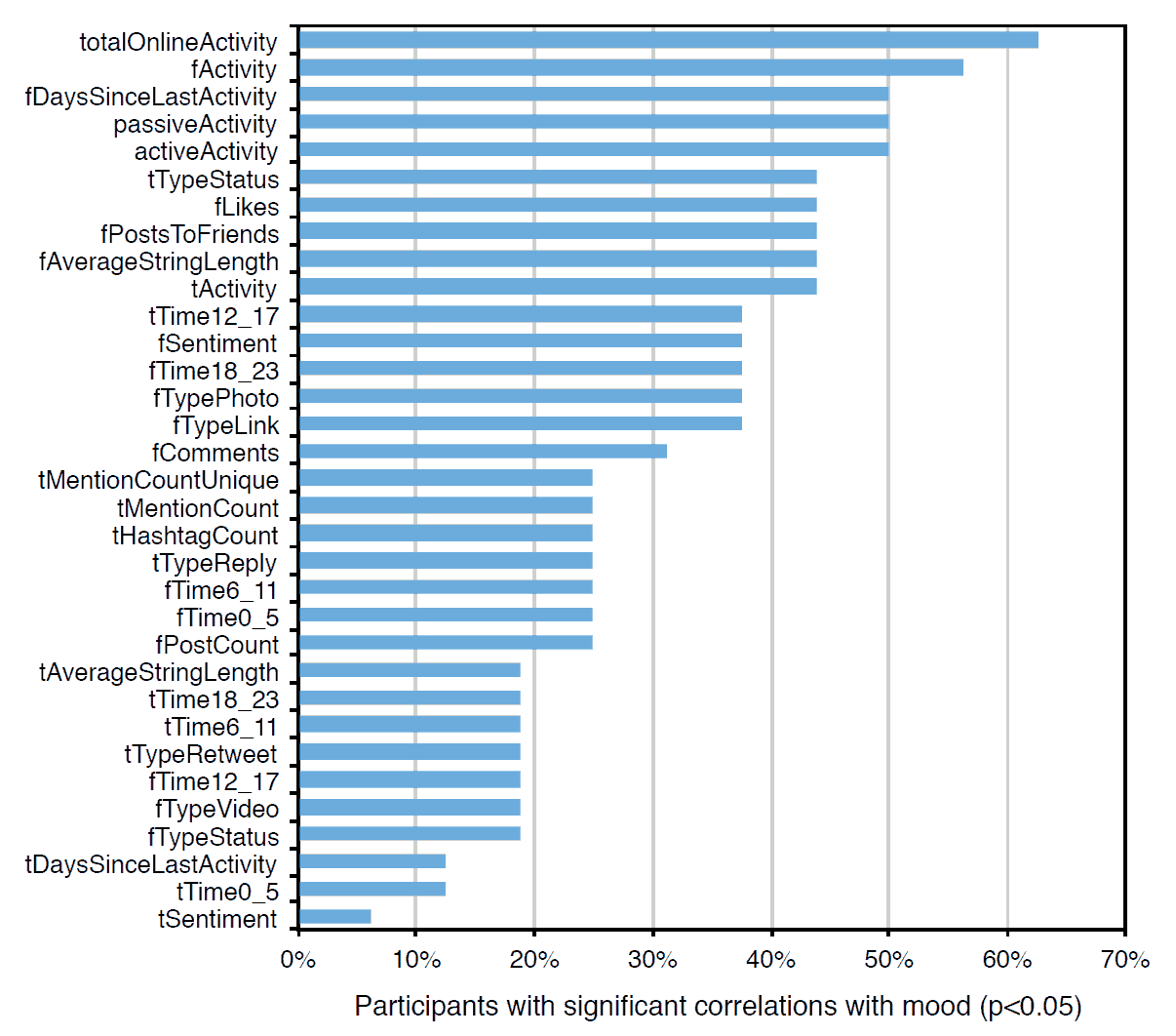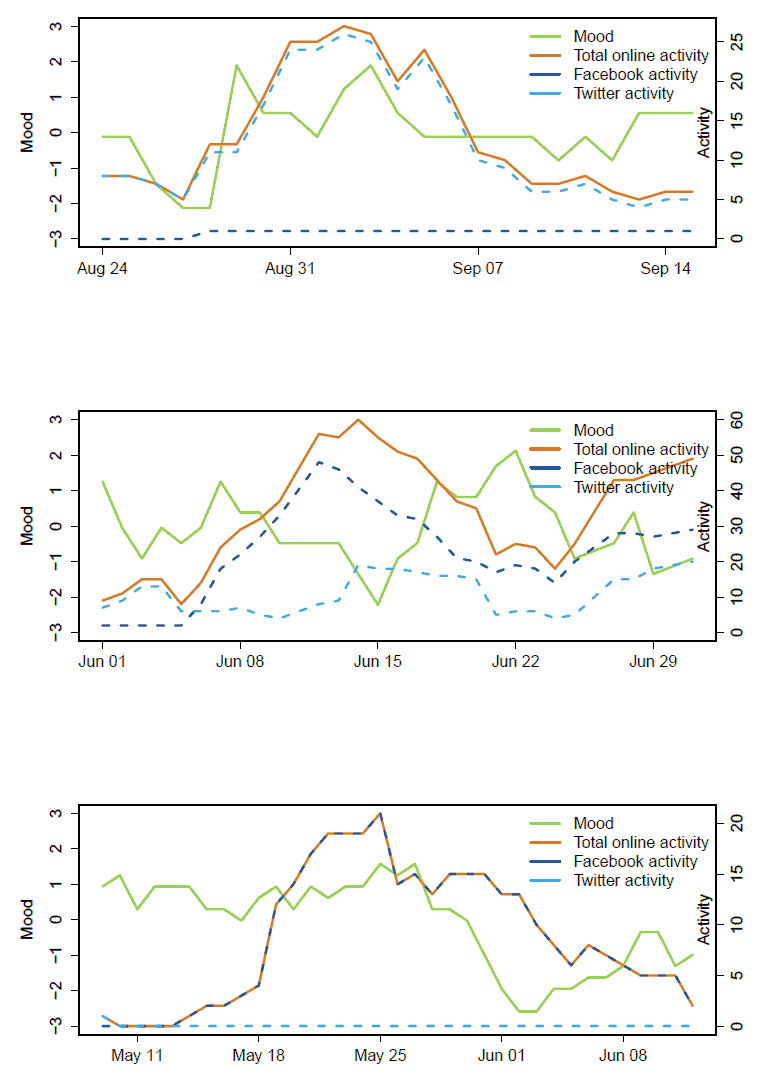





OSN Mood is a study analysing the extent to which the changes of an individual's mood can be inferred by tracking their online activity on Facebook and Twitter.
Over a month-long study, we captured activity from our participant's Facebook and Twitter feeds and had them report their daily mood for use as ground truth via experience sampling apps (not built in-house).
It was found that mood changes could be detected within a window of seven days for some (61%), but not all, of the participants using specific online activity features. Some participants displayed positive corrections between their mood and their online activity while others displayed negative correlations.
We developed the mood tracking system which would (i) identify whether that user's mood changes can be predicted through online activity, (ii) identify whether their mood is positive or negatively correlated with their online activity, and (iii) use their online activity to passively track their mood changes.
In this study we demonstrated the feasibility of detecting real-world mood changes of people through their online activity on social networks such as Facebook and Twitter. This was the first case of exploring correlations between activities over multiple OSNs and real-world mood data captured through experience sampling.





